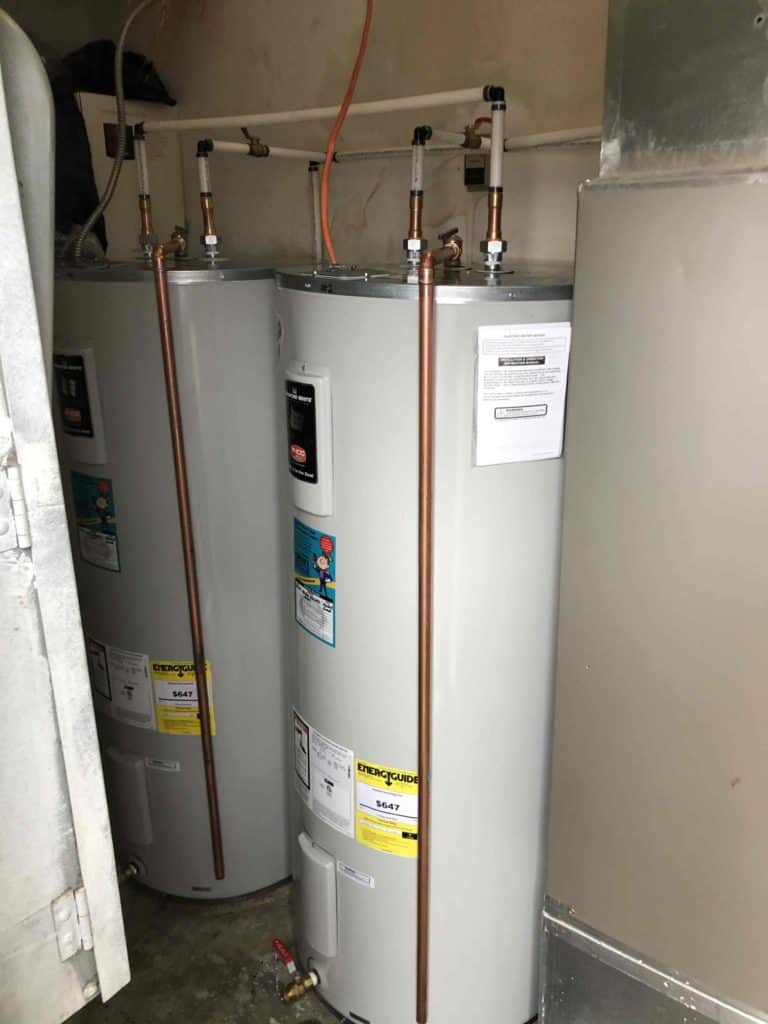Table of Contents
Many homeowners express an interest in installing a water heater expansion tank. Essentially, these tanks provide superior regulation of the air and water pressure within your home plumbing system. This can be beneficial in a number of ways, yet, like any home plumbing additions, an expansion tank is not designed to last forever. Sooner or later, you may notice some signs that your expansion tank requires repair.
Hot water heaters can be complicated, and it’s usually best to enlist a trained plumber to make the repairs for you. If you live in the Indianapolis area, consider Carter’s My Plumber. Our team is proud to offer water heater repair in Indianapolis and beyond.

Common Concerns with Water Heater Expansion Tanks
How do you know when it’s time to call a professional plumber? First and foremost, it’s smart to be aware of some of the most common water heater problems, specifically those that involve the expansion tank. Here are a few typical issues to look out for.
1) Venting Water
If you find that your expansion tank is venting water, it’s likely due to a leak, caused by simple wear and tear. Do a visual inspection of the tank to see where the damage lies and where the leak is coming from.
If the leak seems like it’s coming from the pipe at the top of the tank, that may be something you can address yourself. Using a wrench, tighten the pipe, without over tightening.
But if the problem is with the tank itself, that’s usually not something you can fix on a DIY basis. In fact, that might be a sign that you’re due for a replacement. Call in the pros for this job.
2) Blocked Air
The primary purpose of the expansion tank is to regulate air pressure, which means that the tank provides a place for air to sit in your hot water system. Air is an important part of how hot water heaters function, yet when the air gets trapped or blocked, it can cause an issue known as hydronic airlock. This prevents water from passing through the tank and connected pipes. So, if you find that you’re no longer getting hot water when you need it, hydronic airlock is one of the most likely culprits.
The good news? Expansion tanks are designed to prevent airlocks from happening, which is one of the main reasons to invest in one. But airlocks can still happen if the tank is malfunctioning in some way. If that’s the case, you’ll need to enlist the expertise of a professional plumber.
3) Tank Needs Recharging
Expansion tanks can be made from multiple types of material, but among older tanks, steel is the most common option. Steel tanks work by combining water and air in order to maintain pressure. With time, the water absorbs air, and when that happens, the tank loses some of its pressure.
Addressing this problem and restoring your air pressure means recharging the tank. This may be something you can do on your own. Just close the isolation valve, drain the expansion tank’s water, then reopen to fill it with the appropriate level of water.
Of course, this is also something you can outsource to a professional plumber if you so desire.
4) Insufficient Air in the Diaphragm Tank
If you have a newer model expansion tank, it likely works via diaphragm system. The diaphragm separates the water and air, which means these tanks do not lose pressure as a result of water absorbing air.
The problem you may experience with diaphragm tanks is the loss of small, incremental amounts of air through a loose valve. When this happens, you’ll need to add more air and also correct the problem with your valve.
Adding the air is simple. Just get an air pump, like the kind you’d use to inflate a basketball or a set of bike tires, and connect it to the valve. Most units work best at 12 psi, though you’ll want to double-check the specifics of your model.
If you find that the tank doesn’t hold air, that usually means the diaphragm itself is faulty. A professional plumber can help you fix it.
5) Condensation on the Tank
One final note: If you notice condensation on the tank, that’s almost always a sign of trouble, requiring intervention from a professional plumber. Not only can condensation droplets cause rust, but they may also drip down and interfere with your unit’s electrical wiring. The exact cause of condensation is hard to pin down, which is why it’s so important to call a professional ASAP.
Additional Questions About Expansion Tanks
Having a difficult time troubleshooting your expansion tank? Here are a few additional topics to consider.
How do I know if my water heater expansion tank is bad?
Some of the most common issues include consistently cold water, condensation, and leaking from the pressure relief valve.
What happens when expansion tanks fail?
Failed expansion of water usually means insufficient hot water, or a blockage in your home plumbing system.
How often do expansion tanks need to be replaced?
Though it depends on your local water quality, an expansion tank will typically last somewhere between five and eight years.
What are the symptoms of an expansion tank that is filled with water?
Signs of excess water include dripping/leaking from the valve or excess pressure.
Do expansion tanks require maintenance?
You may need to occasionally use an air pump to maintain the proper psi level.
What can I use instead of an expansion tank?
Installing a thermal expansion relief valve can serve much the same purpose as a full-on expansion tank. Ask your plumber about the merits of each option.
How much does it cost to replace an expansion tank?
The cost of replacing thermal expansion tanks can vary, but usually falls somewhere between $250 and $500.



